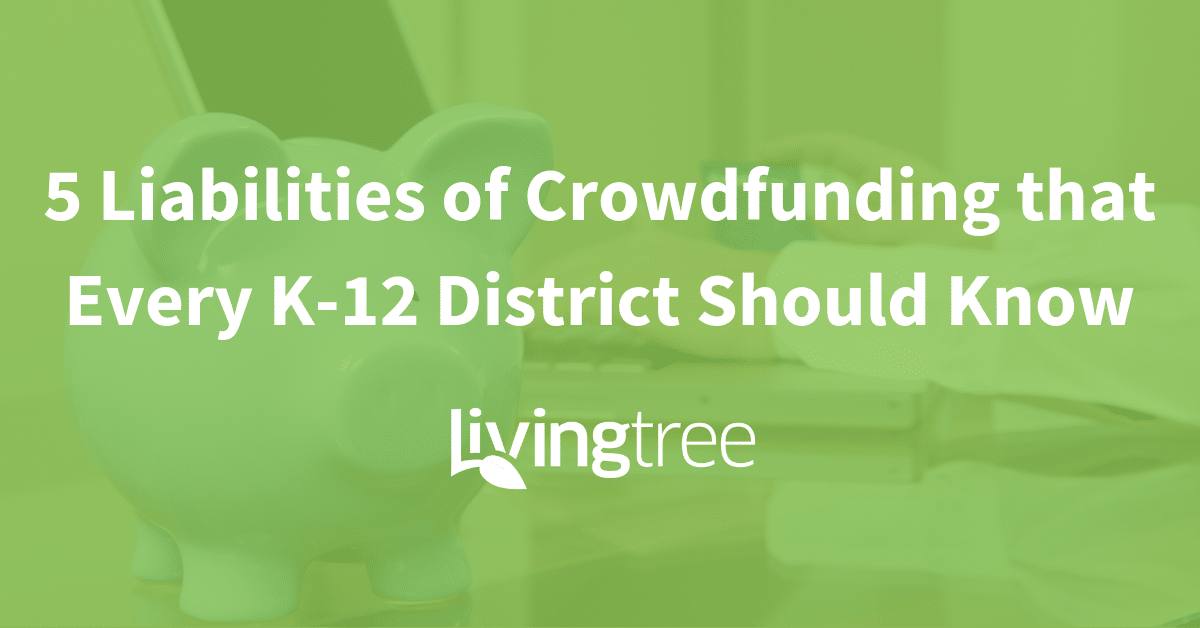Over the years, there has been a growing spotlight on the education funding gap. The gap has become more of a problem for many K-12 school districts with recent statistics showing an increase in teacher spending on school supplies.
Many schools and districts are finding that traditional fundraising can no longer cover some of the greater costs that are needed, and as a result of the mass growth in technology, an increasing number of K-12 members are now requesting funds through crowdfunding sites. These sites are providing valuable opportunities for K-12 staff, organizations, and teams to raise funds for additional resources and experiences, while addressing the needs of our schools and students.
However, these Crowdfunding sites were not built specifically for school districts and lack the necessary oversight and control. Every online fundraising campaign that is posted has potentially serious liabilities for a school district, and can result in a number of legal and financial violations.
As a result of the liabilities, some districts take the easy route by setting policies that ban crowdfunding. However, this option forgoes the many benefits that crowdfunding has to offer for school districts, and creates a new task of having to police the large number of crowdfunding sites to ensure district members aren’t using them. It can also imply a lack of trust in their educators. Until the educational funding gap is solved, schools should absolutely fundraise online, however it should be done in an appropriate way. That’s why it’s important that district leaders be aware of the liabilities associated with crowdfunding, and use the information to evaluate crowdfunding platforms for their district.
Bonus info: Get the School District Crowdfunding Considerations Guide for a real example of the risks that school districts are facing and the 7 areas that administrators need to consider.
Below, we’ve put together the 5 Liabilities of Crowdfunding that every K-12 District should know:
1. Fundraising on the School or District’s Behalf
Most Crowdfunding sites will allow anyone within the district to launch fundraising campaigns. This means they can use the name, logo, or images of the school or district without any form of consent. Based on how the campaign is pitched, the campaign can reflect poorly on the district, and the results of the campaign can cause PR nightmares.
2. Sharing Student Information
Everyone loves to see pictures and know the students that are being directly impacted by their contribution, however this can be a largely overlooked FERPA violation. Sharing student images or names without consent can create huge liabilities for a district.
3. Routing Funds through Personal Accounts
Many Crowdfunding sites transfer the lump sums directly to the person who posted the campaign, which raises legal and financial accountability issues. In most cases, this is also a violation of district and state policies that affirm that the District Treasurer is supposed to be in charge of the funds.
4. Ownership
Once completed, who actually owns those funds or products that are produced through that campaign? Was the campaign personal or on behalf of the district? Is that the property of a teacher, a school, or the district? Some teachers will tell you that everything they raise is for the school, while others will tell you differently if policies are not in place to outline this problem.
5. Existing/Incompliant Resources
It’s actually a common occurrence for staff to raise money for items that either already exist elsewhere, or already have funding. It’s also not uncommon for staff to raise money for technology that isn’t approved or that the curriculum isn’t available for.
These are all problems that school districts are solving with Livingtree Give.
Give provides district oversight to every fundraiser, while also assuring donors that every single campaign has been vetted and approved through the district’s built in and customizable approval process. District admin can now track every single dollar, route funds through a single district account, easily disperse funds to the appropriate accounts, and generate reports – all in real time.




